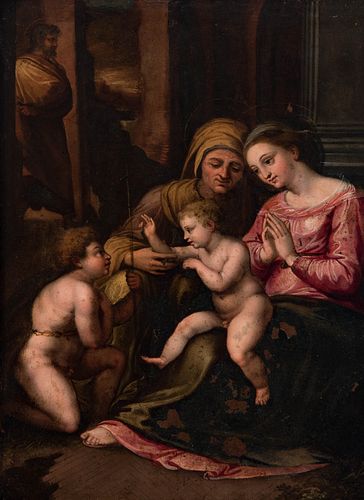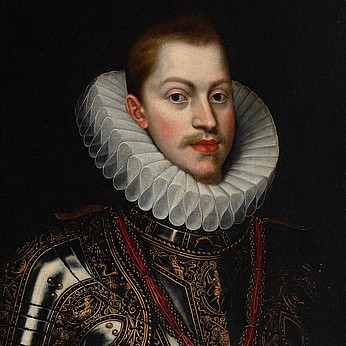Italian school of the XVI century. Following RAFAEL SANZIO (Italy, 1483 - 1520). "The Holy Family of Francis I/The Holy Family Grande." Oil on coppe
Lot 29
About Seller
Setdart Auction House
Carrer Aragó 346
Barcelona
Spain
Setdart Subastas was born in 2004 and is currently the first online art auction in Spain with solidity, prestige and reliability guaranteed by our more than 60,000 users. Setdart has a young, dynamic and enterprising team ready to successfully manage the purchase and sale of art works through custom...Read more
Estimate:
EUR€2,500 - EUR€3,000
$2,604.17 - $3,125
Absentee vs Live bid
Two ways to bid:
- Leave a max absentee bid and the platform will bid on your behalf up to your maximum bid during the live auction.
- Bid live during the auction and your bids will be submitted real-time to the auctioneer.
Bid Increments
| Price | Bid Increment |
|---|---|
| EUR€0 | EUR€10 |
| EUR€200 | EUR€25 |
| EUR€500 | EUR€50 |
| EUR€1,000 | EUR€100 |
| EUR€3,000 | EUR€200 |
| EUR€5,000 | EUR€500 |
| EUR€10,000 | EUR€1,000 |
| EUR€20,000 | EUR€2,000 |
| EUR€50,000 | EUR€5,000 |
About Auction
By Setdart Auction House
Nov 24, 2021
Set Reminder
2021-11-24 09:00:00
2021-11-24 09:00:00
America/New_York
Bidsquare
Bidsquare : Old Masters, Day 1
https://www.bidsquare.com/auctions/setdart-auction-house/old-masters-day-1-7873
Setdart Auction House sofia@setdart.com
Setdart Auction House sofia@setdart.com
- Lot Description
Italian school of the XVI century. Following RAFAEL SANZIO (Italy, 1483 - 1520). "The Holy Family of Francis I/The Holy Family Grande." Oil on copper. Measurements: 27,5 x 22 cm; 55 x 49 cm (frame). This work is a faithful continuation of the one painted by Raphael Sanzio in 1518, an oil on panel transferred to canvas now in the Louvre Museum in Paris. Raphael depicted in this canvas the Holy Family accompanied by St. John the Baptist as a child and his mother, St. Elizabeth. The placement of the different figures reflects the hierarchy of the characters in this iconography. Thus, we see St. Joseph behind, almost hidden in the shadows, while the two women and the two children remain in the foreground, directly illuminated. These four figures form a typically Raphaelesque pyramidal scheme, much imitated by his followers, clearly classical, which anchors the composition and balances it. In addition, this scheme serves to focus attention on the two main characters: Jesus and Mary. Regarding the subject matter, the iconography that introduces the figure of St. John the Baptist in scenes of the Holy Family or Mary with the Child is not only due to the saint's condition as a relative of Jesus, but also has a theological meaning. These images present St. John the Baptist as a prophet who announces the redemptive mission of Christ, and that is why, despite the fact that he is represented as a child, before his retreat to the desert, he appears with the skin of a lamb or camel and, generally, accompanied by the usual iconographic attributes in his images, which allude to the Passion of Christ. However, unlike what happens in other paintings, both by Raphael and other authors, here the children appear oblivious to the dramatic fate of Jesus. Only the two women show a certain pain contained in their expressions that lets us guess the sorrow with which they contemplate the children's games.
- Shipping Info
-
In-house shipping available. Please inquire at admin@setdart.com.
-
- Buyer's Premium



 EUR
EUR CAD
CAD AUD
AUD GBP
GBP MXN
MXN HKD
HKD CNY
CNY MYR
MYR SEK
SEK SGD
SGD CHF
CHF THB
THB
















